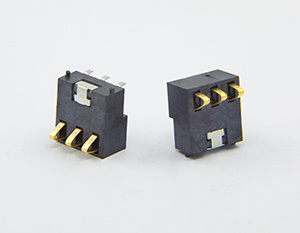Your professional supplier of electronic switches, sockets, and connectors!
Waterproof TYPE C process characteristics
Dec 12,2022

SB data cables are used to connect and communicate between computers and external devices, and can also be used for mobile phone charging and connection to the outside world. In simpler terms, they are used for data transmission and charging. Waterproof TYPE C products have the following characteristics:

1. Data transmission speed reaches 10Gbit/s, which is also the standard for USB3.1;
2. The Type-C interface socket measures approximately 8.3mm × 2.5mm, featuring a slim design;
3. Supports "reversible plug" functionality, allowing insertion from either side and withstanding 10,000 repeated insertions;
4. Waterproof TYPE C is equipped with standard specification cables. The Type-C connector can handle a 3A current and also supports "USBPD", which exceeds the power capabilities of existing USB power supplies, providing 100W of power. The Type-C connector is suitable for various ultra-thin tablets, mobile phones, 2-in-1 devices, and other special-purpose mobile devices, and will become the connector standard for functions such as data transmission and charging, including image transmission. However, most existing USB Type-C data cables are round cables, and their transmission performance is not as good as Type-C data cables made of FPC flexible printed circuits.
Waterproof TYPE C manufacturers of consumer electronics products mostly mount them on rigid boards or rigid-flex boards. Traditional rigid boards are inflexible and inconvenient to use; while rigid-flex boards have the load-bearing capacity of rigid boards and the flexibility of flexible boards, their production process is complex, requiring both FPC and PCB production equipment, making production difficult, with a yield rate of only about 70%, high material waste, long production cycles, and high prices. Flexible FPC circuit boards are high-reliability flexible printed circuit boards made with polyimide or polyester film as the substrate. They feature high wiring density, light weight, thin thickness, and good bending properties. However, the board material of flexible circuit boards is too soft, and their ability to support electronic components is poor. Early on, they lacked the capability to support Type-C interfaces, so their promotion wasn't particularly smooth. But with the surge in demand for HUBs, there is an urgent need for matching cable products. Recently, many companies have overcome this technological hurdle, producing FPC data cables that can be paired with Type-C interface USB3.1 data cables.
Due to the advantages of waterproof TYPE C in high-frequency transmission, electromagnetic compatibility (EMC) design is given more attention during the production process. There is an EMC pad in the middle of the product's connecting tongue. One of its functions is to ensure that the product's usage environment achieves EMC effects. The current common practice in the market is to connect the EMC PAD's design pins to the outer metal shell through solder pads to form a circuit. This structure has the following disadvantages: The EMCPAD is combined with plastic through insert molding, and the pins are slender columns. During insert molding, burrs are easily produced at the sealing positions of the EMCPAD pins; the longitudinal length is relatively long and perpendicular to the opening and closing direction of the mold, making it difficult to position in the mold, or there is a risk of skewing or being damaged by the mold during placement, which is not conducive to the realization of the automated manufacturing process and does not support the automatic material feeding process of the injection molding mold; in addition, the pins also occupy the customer's PCB space, requiring reserved solder holes, and there is a risk of poor spacing dimensions.
Contact Us
Email:
sales02@jbl-hk.com
sales03@jbl-hk.com
Tel/WeChat:
86769-83339091 / 83339095
Address:No. 5, Xinhuan Road, Langbei Village, Changping Town, Dongguan City, Guangdong Province










